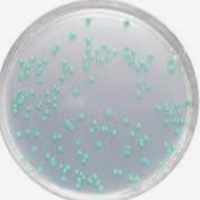Effect of production process and high-pressure processing on viability of Listeria innocua in traditional Italian dry-cured coppa

Accepted: 24 June 2020
HTML: 22
All claims expressed in this article are solely those of the authors and do not necessarily represent those of their affiliated organizations, or those of the publisher, the editors and the reviewers. Any product that may be evaluated in this article or claim that may be made by its manufacturer is not guaranteed or endorsed by the publisher.
Authors
In this study the effect of the application of High Pressure Treatment (HPP) combined with four different manufacturing processes on the inactivation of Listeria innocua, used as a surrogate for L. monocytogenes, in artificially contaminated coppa samples was evaluated in order to verify the most suitable strategy to meet the Listeria inactivation requirements needed for the exportation of dry-cured meat in the U.S. Fresh anatomical cuts intended for coppa production were supplied by four different delicatessen factories located in Northern Italy. Raw meat underwent experimental contamination with Listeria innocua using a mixture of 5 strains. Surface contamination of the fresh anatomical cuts was carried out by immersion into inoculum containing Listeria spp. The conditions of the HPP treatment were: pressure 593 MPa, time 290 seconds, water treatment temperature 14°C. Listeria innocua was enumerated on surface and deep samples post contamination, resting, ripening and HPP treatment. The results of this study show how the reduction of the microbial load on coppa during the production process did not vary among three companies (P>0.05) ranging from 3.73 to 4.30 log CFU/g, while it was significantly different (P<0.01) for the fourth company (0.92 log CFU/g). HPP treatment resulted in a significant (P<0.01) deep decrease of L.innocua count with values ranging between 1.63-3.54 log CFU/g with no significant differences between companies. Regarding superficial contamination, HPP treatment resulted significant (P<0.01) only in Coppa produced by two companies. The results highlight that there were processes less effective to inhibit the pathogen; in particular for company D an increase of L. innocua count was shown during processing and HPP alone cannot be able to in reaching the Listeria inactivation requirements needed for exportation of dry-cured meat in the U.S. According to the data reported in this paper, HPP treatment increases the ability of the manufacturing process of coppa in reducing Listeria count with the objective of a lethality treatment
How to Cite
PAGEPress has chosen to apply the Creative Commons Attribution NonCommercial 4.0 International License (CC BY-NC 4.0) to all manuscripts to be published.

 https://doi.org/10.4081/ijfs.2020.9133
https://doi.org/10.4081/ijfs.2020.9133



